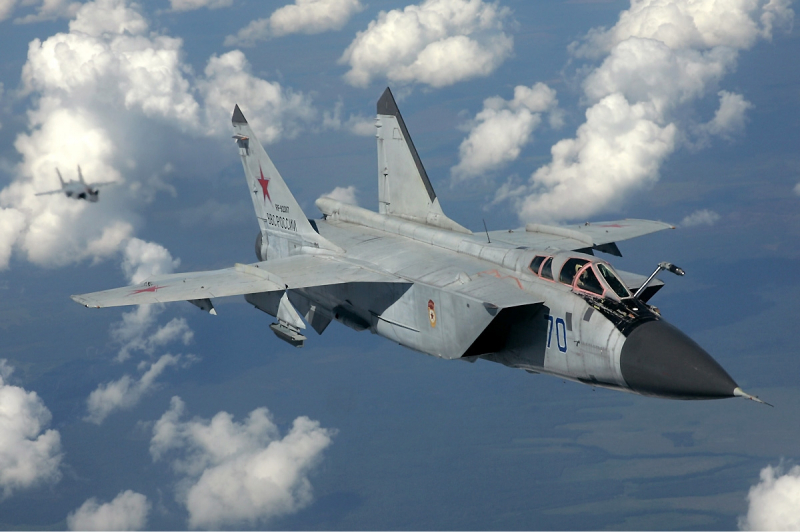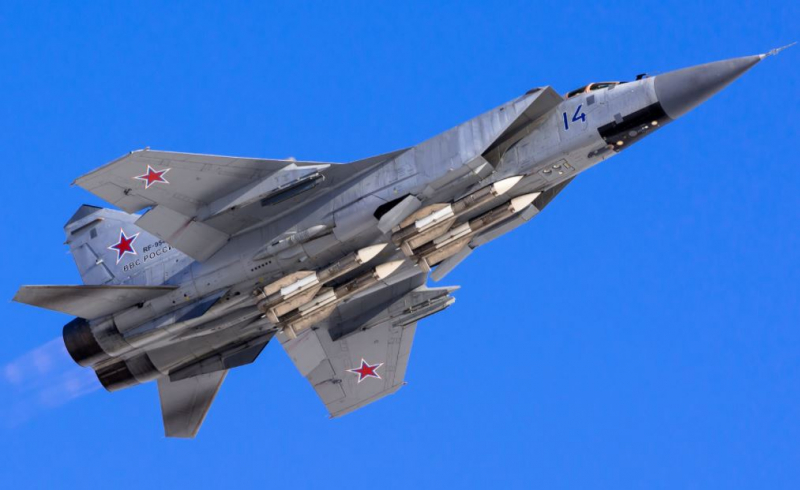Mikoyan MiG-31

The Soviet Union produced the Mikoyan MiG-31 interceptor aircraft, also referred to as Foxhound. The MiG-25 was meant to be replaced by it. The Mikoyan MiG-31 was still in use by the Russian Air Force and the Kazakh Air Force after the fall of the USSR. The MiG-31 is anticipated to be used by the Russian Defense Ministry until 2030.
The MiG-31 was special because it could fly at both high and low altitudes while traveling at supersonic speed, largely because of its potent twin engines. From 1975 through 1994, this airplane was manufactured. More than 500 units were built in total, according to estimates. Its speed at a high altitude is 2.83 mach. It can reach a top speed of 1.23 mach when flying at low altitude.
The MiG-31 "Foxhound" was created as a spin-off of the record-breaking MiG-25 "Foxbat." The Foxbat was a fast aircraft, but it was not agile. It was a simple airframe designed to intercept incoming aerial threats by using its own powerful engines, an equally powerful radar system, and long-range missiles to gain altitude, accelerate over long distances, and unleash a lethal payload on a target. The MiG-25, on the other hand, lacked adequate low-altitude control, was strictly a high-altitude weapon, and relied on ground-based radar for intercepts. The MiG-31, while resembling the MiG-25 on the outside, was essentially an all-new aircraft with more powerful engines, low-altitude lethality, and a second crewman in the rear cockpit to manage the expanded radar suite. The Cold War-era MiG-31 "Foxhound," which was developed in the 1980s, is still in use today and holds the record for being the heaviest operational interceptor in the entire world, weighing in at over 61.7 tons.
Technical Notes
Wing span (metric): 13.50 m
Length (metric): 22.70 m
Height (metric): 6.20 m
Powerplant: 2 x 151,9 KN Soloviev D-30F6 turbofans.
Engine Model(s): Soloviev D-30
Maximum speed: Mach 2.83











